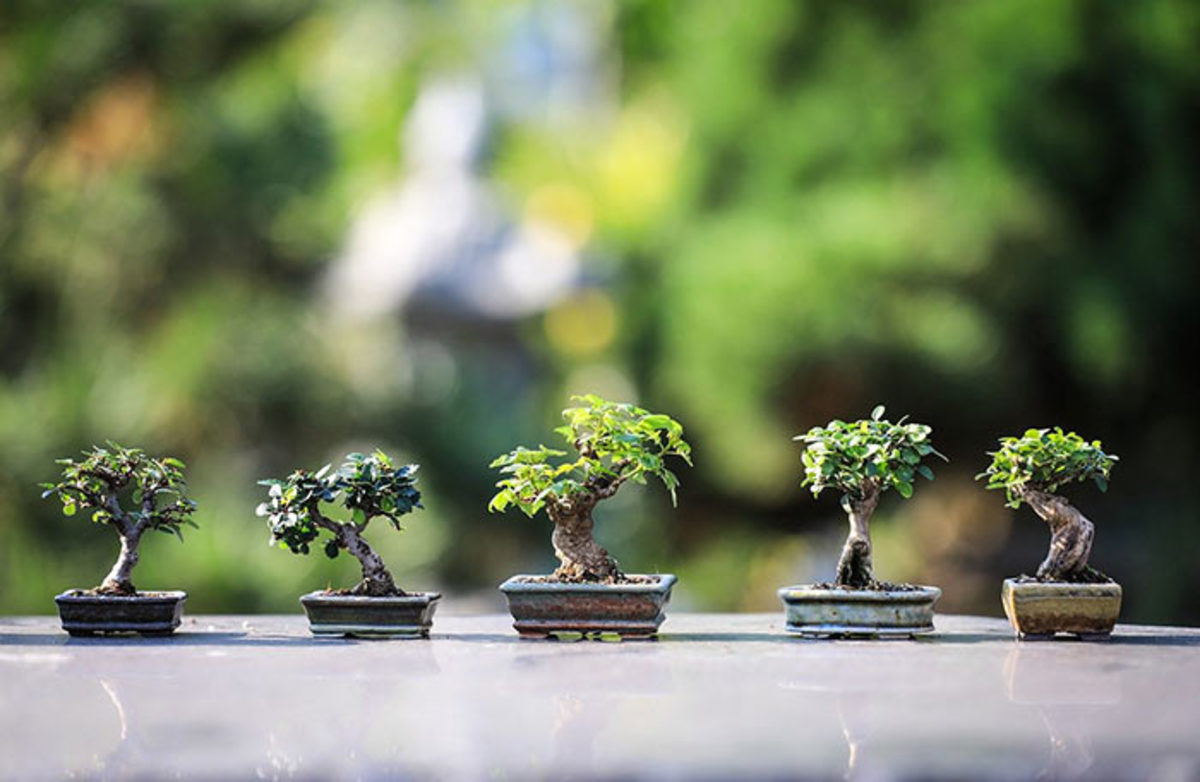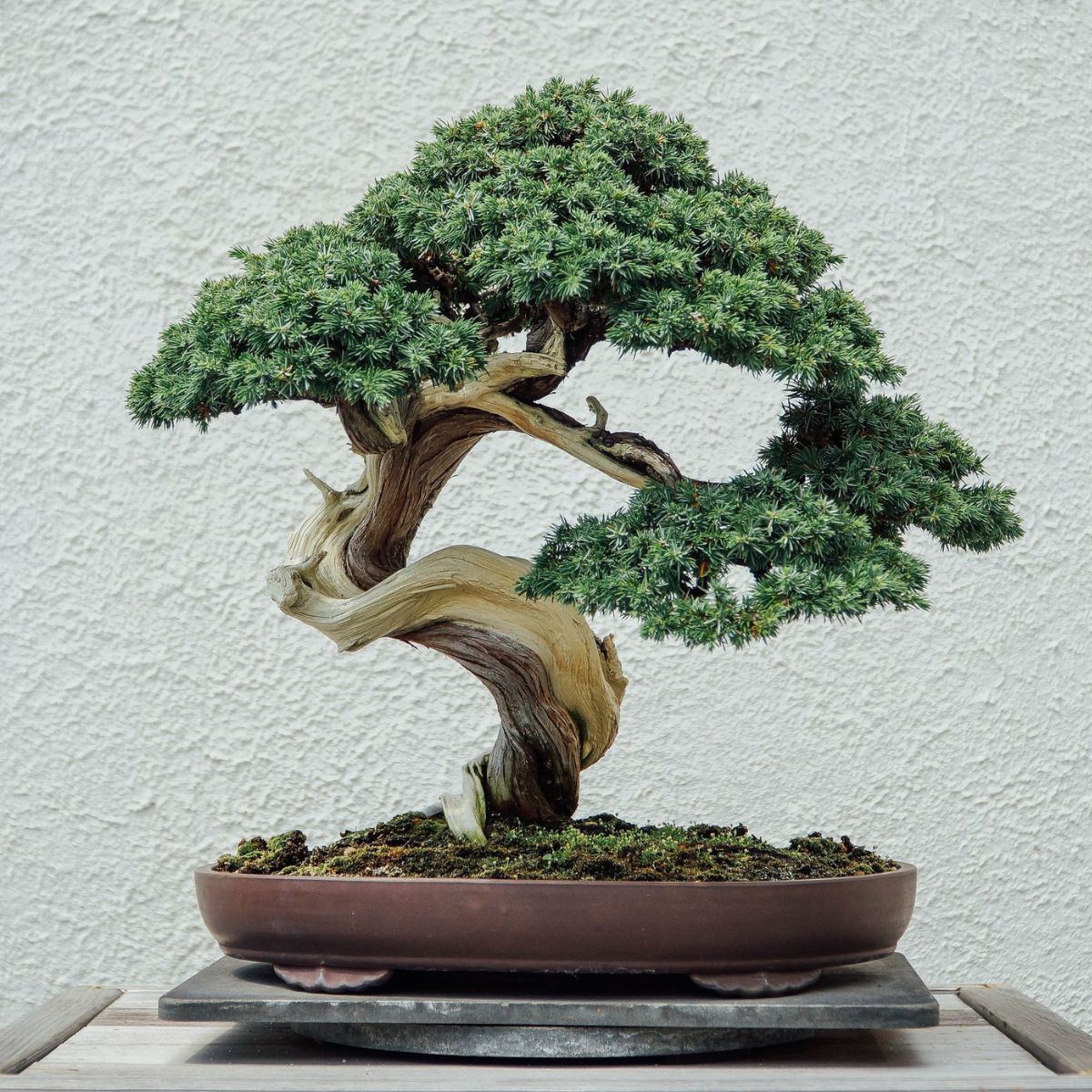The Ficus bonsai tree is the best for indoors. It is hardy and low-maintenance, perfect for beginners.
Bonsai trees bring a touch of nature indoors, enhancing home aesthetics. Among the many options, the Ficus bonsai stands out. This tree is renowned for its resilience and adaptability to indoor conditions. It thrives in various light conditions, making it suitable for most homes.
The Ficus also requires minimal watering and pruning, which is ideal for busy individuals. Its glossy leaves and intricate trunk add visual appeal. Beginners find it especially friendly due to its robust nature. Investing in a Ficus bonsai can transform your indoor space into a serene, green haven.

Credit: www.hortmag.com
Benefits Of Indoor Bonsai Trees
Indoor bonsai trees offer several benefits for your home. They bring nature inside and create a serene atmosphere. Below are some advantages of having an indoor bonsai tree.
Air Purification
Indoor bonsai trees help purify the air. They absorb toxins and release oxygen. This process improves air quality. Cleaner air means better health for your family.
Some bonsai trees are more effective at air purification. For example, the Ficus Bonsai is known for its air-cleaning abilities. It removes harmful chemicals like formaldehyde and benzene.
| Bonsai Tree | Air Purification Benefits |
|---|---|
| Ficus Bonsai | Removes formaldehyde, benzene, and trichloroethylene |
| Jade Bonsai | Absorbs carbon dioxide and releases oxygen |
Aesthetic Appeal
Indoor bonsai trees enhance the beauty of your home. They add a touch of elegance to any room. Their miniature size makes them perfect for small spaces.
Bonsai trees also fit different decor styles. Whether your home is modern or traditional, a bonsai tree adds charm. The Chinese Elm Bonsai is popular for its graceful appearance.
- Fits well on desks and tables
- Complements both modern and traditional decor
- Creates a focal point in any room
Besides their beauty, bonsai trees offer a sense of calm. Caring for them can be a relaxing hobby. This makes them ideal for stress relief.

Credit: thursd.com
Factors To Consider
Choosing the right bonsai tree for indoors involves several factors. Each bonsai species has unique needs. Understanding these can ensure a healthy and thriving tree. Here we discuss light requirements and humidity levels. These are crucial for indoor bonsai trees.
Light Requirements
Light is essential for bonsai trees. Some bonsai trees need bright light. Others thrive in low light conditions. Here’s a quick guide:
| Bonsai Tree | Light Needs |
|---|---|
| Ficus | Bright, indirect light |
| Jade | Full, direct sunlight |
| Chinese Elm | Partial shade |
Place your bonsai near a window. Ensure it gets adequate light daily.
Humidity Levels
Humidity is another vital factor. Bonsai trees need specific humidity levels. Here are some tips:
- Use a humidity tray under the bonsai.
- Mist the leaves regularly.
- Keep the room humid.
Some bonsai trees prefer higher humidity. Others can tolerate lower levels. For example:
- Ficus: High humidity
- Jade: Moderate humidity
- Chinese Elm: High humidity
Maintain the right humidity for your bonsai. This will help it flourish indoors.
Ficus Bonsai
Choosing the right bonsai tree for indoors can be tricky. The Ficus Bonsai is an excellent choice. It is known for its resilience and beauty. This tree adapts well to indoor environments.
Care Tips
Taking care of a Ficus Bonsai is simple. Follow these tips:
- Water the tree when the topsoil feels dry.
- Mist the leaves to maintain humidity.
- Feed with a balanced fertilizer monthly.
- Prune regularly to shape the tree.
Ideal Placement
Placement is crucial for a healthy Ficus Bonsai. Here’s where it thrives:
| Location | Light | Temperature |
|---|---|---|
| Near a window | Bright, indirect light | 60-75°F (15-24°C) |
| Living room | Filtered sunlight | Avoid drafts |
Credit: www.thespruce.com
Jade Bonsai
The Jade Bonsai, known for its thick, succulent leaves, is a popular indoor bonsai choice. Its unique appearance and low maintenance needs make it ideal for beginners and experienced bonsai enthusiasts alike. This resilient plant, also known as Crassula ovata, brings a touch of nature indoors while purifying the air. Let’s explore its specific requirements to help your Jade Bonsai thrive.
Watering Needs
The Jade Bonsai requires careful watering to avoid root rot. Its succulent leaves store water, making it drought-tolerant. Follow these simple guidelines for watering:
- Water thoroughly when the soil feels dry to the touch.
- Ensure the pot has drainage holes to prevent waterlogging.
- Water less frequently during winter months.
Overwatering can be more harmful than underwatering. Always check the soil before watering again.
Growth Characteristics
The Jade Bonsai grows slowly, making it a great choice for bonsai. Here are some key growth characteristics:
| Feature | Detail |
|---|---|
| Height | Up to 3 feet indoors |
| Leaf Color | Green with a hint of red |
| Trunk | Thick and woody |
Pruning is essential to maintain its shape. Trim new growth regularly to encourage a fuller appearance. The Jade Bonsai can also produce small, star-shaped white or pink flowers under ideal conditions.
Chinese Elm Bonsai
The Chinese Elm Bonsai is a popular choice for indoor bonsai enthusiasts. Its graceful structure and tiny leaves create an elegant appearance. This tree is resilient and adaptable, making it perfect for beginners and experts alike.
Pruning Techniques
Pruning is crucial for maintaining the shape of your Chinese Elm Bonsai. Follow these simple steps:
- Use sharp, sterile pruning shears.
- Remove dead or damaged branches first.
- Cut back long shoots to maintain the desired shape.
- Pinch back new growth during the growing season.
Regular pruning encourages dense foliage and a balanced form. Always prune above a healthy bud or leaf node.
Soil Preferences
The Chinese Elm Bonsai thrives in well-draining soil. A balanced bonsai soil mix works best. Consider the following soil components:
| Component | Purpose |
|---|---|
| Akadama | Retains moisture and nutrients |
| Pumice | Improves drainage and aeration |
| Lava Rock | Provides structure and stability |
Mix these components in equal parts for a balanced soil blend. Ensure the pot has drainage holes to prevent waterlogging.
Water the soil when the top layer feels dry. Avoid overwatering to prevent root rot.
By following these guidelines, your Chinese Elm Bonsai will thrive indoors and remain healthy and beautiful.
Serissa Bonsai
The Serissa Bonsai, also known as the “Tree of a Thousand Stars,” is a popular choice for indoor bonsai enthusiasts. Its delicate, white flowers and dark green leaves make it an attractive addition to any indoor space. This bonsai tree is native to Southeast Asia and is loved for its aesthetic appeal and manageable size.
Flowering Patterns
The Serissa Bonsai is renowned for its beautiful flowering patterns. It produces small, star-shaped white flowers that bloom throughout the year. These flowers often appear in clusters, creating a stunning visual display. The best flowering occurs in late spring and early summer. Regular pruning helps maintain its shape and encourages more blooms.
To enhance flowering, place the tree in a well-lit area. Ensure it receives indirect sunlight for at least six hours daily. Proper watering and balanced fertilizer also promote healthy flowering. Avoid overwatering as it can lead to root rot and hinder flowering.
Common Issues
Despite its beauty, the Serissa Bonsai can face several common issues. One major problem is leaf drop. This usually occurs due to sudden changes in environment or watering routines. To prevent leaf drop, maintain a stable environment and consistent care routine.
Root rot is another issue caused by overwatering. Ensure the soil is well-draining and the pot has adequate drainage holes. Regularly check the soil moisture before watering.
Additionally, pests like aphids and spider mites can affect the Serissa Bonsai. Use insecticidal soap or neem oil to manage these pests. Keep the tree clean and inspect it regularly for any signs of infestation.
| Common Issues | Solution |
|---|---|
| Leaf Drop | Maintain stable environment and consistent care |
| Root Rot | Ensure well-draining soil and proper watering |
| Pests (Aphids, Spider Mites) | Use insecticidal soap or neem oil |
In summary, the Serissa Bonsai is a delightful indoor plant. Its stunning flowers and manageable size make it a favorite. Proper care will ensure it thrives and remains a beautiful addition to your home.
Choosing The Right Container
Choosing the right container for your indoor bonsai tree is essential. It affects the tree’s growth and overall health. The right container also enhances the tree’s appearance. This section will guide you through the process. We will discuss size considerations and material options.
Size Considerations
Picking the correct size container is crucial. A pot that is too small can restrict root growth. This can lead to an unhealthy tree. On the other hand, a pot that is too large can hold too much water. This can cause root rot.
Here are some tips for choosing the right size:
- Root Space: Ensure the pot allows for root growth.
- Tree Size: Match the pot to the tree’s size.
- Depth: A shallow pot is best for most bonsai trees.
Material Options
The material of the container also plays a key role. Different materials offer various benefits and drawbacks. The most common materials are ceramic, plastic, and clay.
| Material | Benefits | Drawbacks |
|---|---|---|
| Ceramic |
|
|
| Plastic |
|
|
| Clay |
|
|
Consider these factors to choose the best container for your indoor bonsai tree. Size and material are key to a healthy and beautiful bonsai.
Maintenance Tips
Maintaining an indoor bonsai tree can be rewarding. It ensures the tree stays healthy and beautiful. This section provides essential maintenance tips for your indoor bonsai tree.
Regular Pruning
Regular pruning is vital for your bonsai’s health. It helps keep the tree in shape and promotes new growth. Use sharp, clean scissors or shears to avoid damaging the tree. Cut back long branches and remove any dead leaves. Pruning also allows more light to reach the inner branches. This helps the tree grow evenly.
Fertilization Routine
A proper fertilization routine ensures your bonsai gets the nutrients it needs. Use a balanced, slow-release fertilizer for the best results. Fertilize your bonsai once a month during the growing season. Avoid fertilizing during the winter months. Over-fertilizing can harm your bonsai, so follow the instructions carefully.
| Season | Fertilization Frequency |
|---|---|
| Spring | Once a month |
| Summer | Once a month |
| Fall | Once a month |
| Winter | Do not fertilize |
- Spring: Fertilize once a month.
- Summer: Fertilize once a month.
- Fall: Fertilize once a month.
- Winter: Avoid fertilizing.
Conclusion
Choosing the best indoor bonsai tree depends on your preferences and care level. Popular options include Ficus, Jade, and Chinese Elm. Each offers unique beauty and requires different care. With the right choice, you can enjoy a thriving indoor bonsai that enhances your living space.
Happy bonsai gardening!

